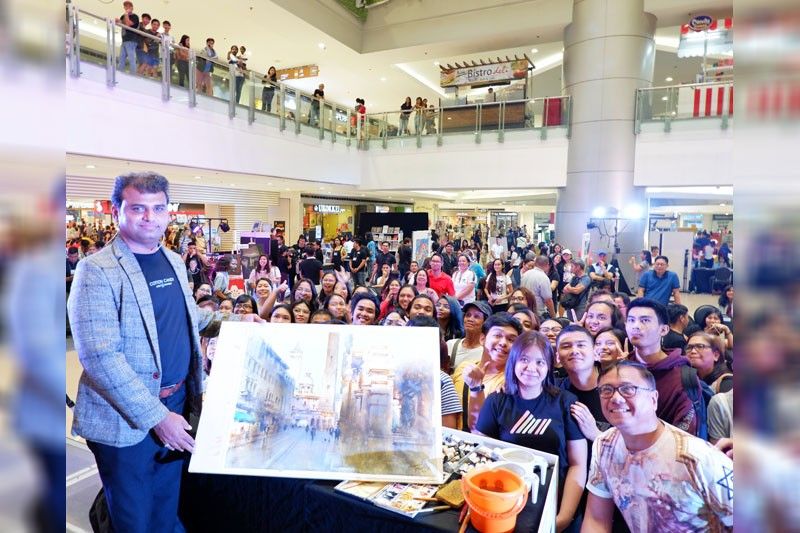The world as Prafull Sawant sees it

Generally I don’t paint every day,” says watercolorist Prafull Sawant when asked about his process. “Sometimes I like to rest, so maybe one month, I won’t do anything. But my thinking process is going on very continuously, because painting has to do with your feelings, a little bit your heart, a little bit your thoughts.”
Sawant, who is based in Nasik, India, visited Manila for the second iteration of Art Bar’s Art Fair for live demonstrations of his landscape paintings. Having been exposed to art since he was a child, and after studying it both in his city, in Mumbai, and in different countries, he eventually came to develop a style that’s photorealistic, but with certain touches of added color and brightness that makes them seem even more alive.
For him, it’s a matter of catching the right light and seeing the subject from a dynamic angle — resulting in sprawling, intricate, and vivid images of street scenes, cityscapes, and landmarks.
In this interview, Prafull Sawant discusses what he finds most interesting in his medium, what he has learned from his travels, and his advice for the next generation of painters.
SUPREME: Can you talk about your beginnings in art?
Prafull Sawant: I’m really lucky. I was born in a family of artists. My father is an artist, my brother is also an artist. My father is our main inspiration for going into the field of art — he was an art teacher in school. So from my childhood, very easily we were attracted to art. In the early stages of my childhood, in the school days, my brother and I participated in many art competitions. We got very good encouragement from that.
What do you like best about watercolor as a medium?
Compared to other mediums, watercolor has a different quality about the fluidity. When you put the water on the paper and touch the brush to it, the color goes everywhere. This is something you don’t get with oil or acrylic color. That’s what I enjoy every time I paint. I’m a landscape painter, and I have to catch the light in the location, and it only lasts 20 or 30 minutes. Watercolor makes it easy to finish a painting on-location in just one and a half hours or two hours. It’s a very handy medium.
What have you learned about art after traveling the world?
I’m from India, and I studied art in my city, Nasik. After that, I went to the big city, Mumbai, and I studied post-graduation there. So that time, I got a very big contrast, because there were no museums in my city, and I had very good chances to see the artists working in Mumbai and there were many exhibitions happening in different galleries. Then I got a national scholarship from the Camlin Art Foundation to go to Europe, in Paris, Florence, and Rome. It exposed me to more museums and art forms, and I ended up doing landscape painting. So that time greatly influenced what I’m doing now.
I’ve visited so many museums in different countries, and I get many influences and inspiration from them. When I traveled to Europe, I realized you should paint from your own thought, not realistic or abstract. I realized that this is my role, that I wanted to do realistic paintings.
Do you still experiment with your work?
Yes. I try to experiment when I work in my studio. When I stop my work for two, three weeks or one month, my thought process includes wanting to do new things, new experiments. That’s why my landscape paintings are not typical, with the sun, the river, mountains, some trees, greenery. My landscapes are mostly architecture, so I try many times to experiment.
What advice do you have for younger painters and beginners?
I conduct many workshops abroad, and I’ve had the experience of teaching art students as a lecturer. And I observed that many new generation artists have the good qualities to become painters, but they have no patience. Patience is the most important for any kind of art, if you are a painter, if you are a musician, if you are a dancer. You have to develop your own patience, and consistency is also important. Many good students haven’t developed this. When I conduct workshops, after three or four hours, they say, “Oh, we are very tired.” If you enroll in art, concentration is necessary.
* * *
For more information and updates on future Art Fairs, follow @artbarph on Instagram and Facebook and visit artbar.ph.















